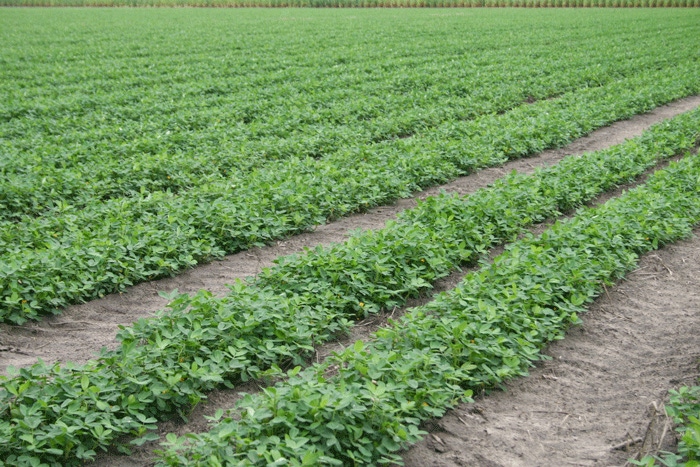
Peanut acreage increase in Arkansas challenged by pigweed.
Many of the farms where peanuts have a good fit have been in either soybean or cotton production over the past few years. Like many acres in Arkansas, these fields are infested with both ALS- and glyphosate-resistant Palmer pigweed. This weed can be devastating in peanuts.
February 7, 2012

Peanut acreage may increase in northeast Arkansas. Clay, Lawrence, Jackson, Phillips and Randolph counties saw the introduction of around 4,000 peanut acres in 2011, and there may be as many as 10,000 acres in 2012 according to the companies involved.
Peanuts prefer sandy, well-drained soils and for the most part need to be planted on fairly wide rows to facility digging and threshing. I grew up on a peanut farm in southwest Oklahoma and I can tell you peanuts are a labor-intensive crop that requires a lot of inputs.
Disease can be a very limiting factor in peanut production. Fields that have produced peanuts for multiple years often run into problems with several different diseases. This is one positive note about the new acres being grown in Arkansas — there should be low disease pressure at least for a while.
On the negative side, many of the farms where peanuts have a good fit have been in either soybean or cotton production over the past few years. Like many acres in Arkansas, these fields are infested with both ALS- and glyphosate-resistant Palmer pigweed. This weed can be devastating in peanuts. I have already spoken with some growers from 2011 that had to hoe their peanuts twice for pigweed. If you are considering jumping on the peanut production train in 2012, you will need to have a plan in place for controlling Palmer amaranth or pigweed.
Historically, products like Prowl, Cadre, Pursuit and Strongarm have been used for pigweed control in peanuts. However, as I previously mentioned, most of our pigweed is resistant to ALS chemistry and some fields (especially in Jackson County) are resistant to the DNA herbicides like Treflan and Prowl. This can make putting together a weed control program for pigweed in peanut tricky.
Here are a couple of options that are effective in other peanut producing states like Georgia, and that we have now confirmed in our own plots near Newport, Ark.
Start clean with a good burndown program if pigweeds are present. (1) Apply Prowl or Prowl H2O at a full rate for your soil type preplant incorporated to a depth of no more than 2 inches, followed by Valor PRE, followed by Cobra or Ultra Blazer plus 2,4-DB on 2- to 3-inch or smaller pigweed or (2) Apply Prowl or Prowl H2O at a full rate for your soil type preplant incorporated to a depth of no more than 2 inches, followed by paraquat plus Storm plus Dual at cracking (just prior to emergence), followed by Cobra or Ultra Blazer on 2- to 3-inch or smaller pigweed. With both these options, you should find yourself a good hoe crew and keep them on standby for a late-season “touch up” prior to harvest.
Dual Magnum and Outlook also have good activity preplant on pigweed in Peanuts (see page 57 of the MP44 online at www.uaex.edufor more specific rates and timings of peanut products).
In addition to pigweed, a good grass control program is essential to peanut production. Specifically johnsongrass and thick populations of crabgrass or barnyardgrass can interfere with harvest. Prowl, Dual or Outlook, followed by Select or Poast Plus will provide effect control of grass in peanuts.
It is exciting to get to be involved with peanut production again. I think we can successfully grow them on many acres in Arkansas if the economics are right and we take care to put together effect weed control programs.
You May Also Like



